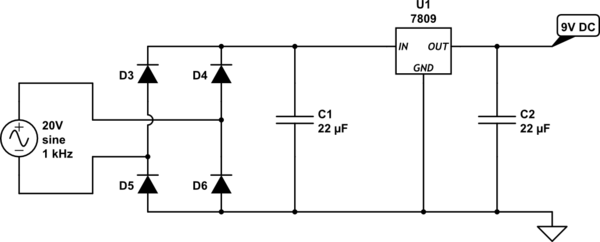I am doing a homework project, making an AC to DC converter using a rectifier circuit and regulator.
The homework conditions are:
We must use an AC input voltage with Vpp = 20V and frequency = 1kHz. We must get an output DC constant positive +9V or above.
My thought (diagram) is
Input AC signal -> voltage doubler -> peak rectifier -> regulator
That is:
I measured the above voltage. This is the result:
Good result. Right? So I connected an LM7812CT to node C2. Like this:
The problem is here. The measured voltage graph looks like this:
What? The input voltage to the voltage regulator drops a lot. I can't get the result what I want. I found that Rsig (power supplier resistance) has much voltage so the input voltage to voltage regulator is very low.
Why does this happen? I think that the input voltage regulator is very small so voltage dividing makes this situation, but it's not clear.
I want to know the reason for the voltage drop.





